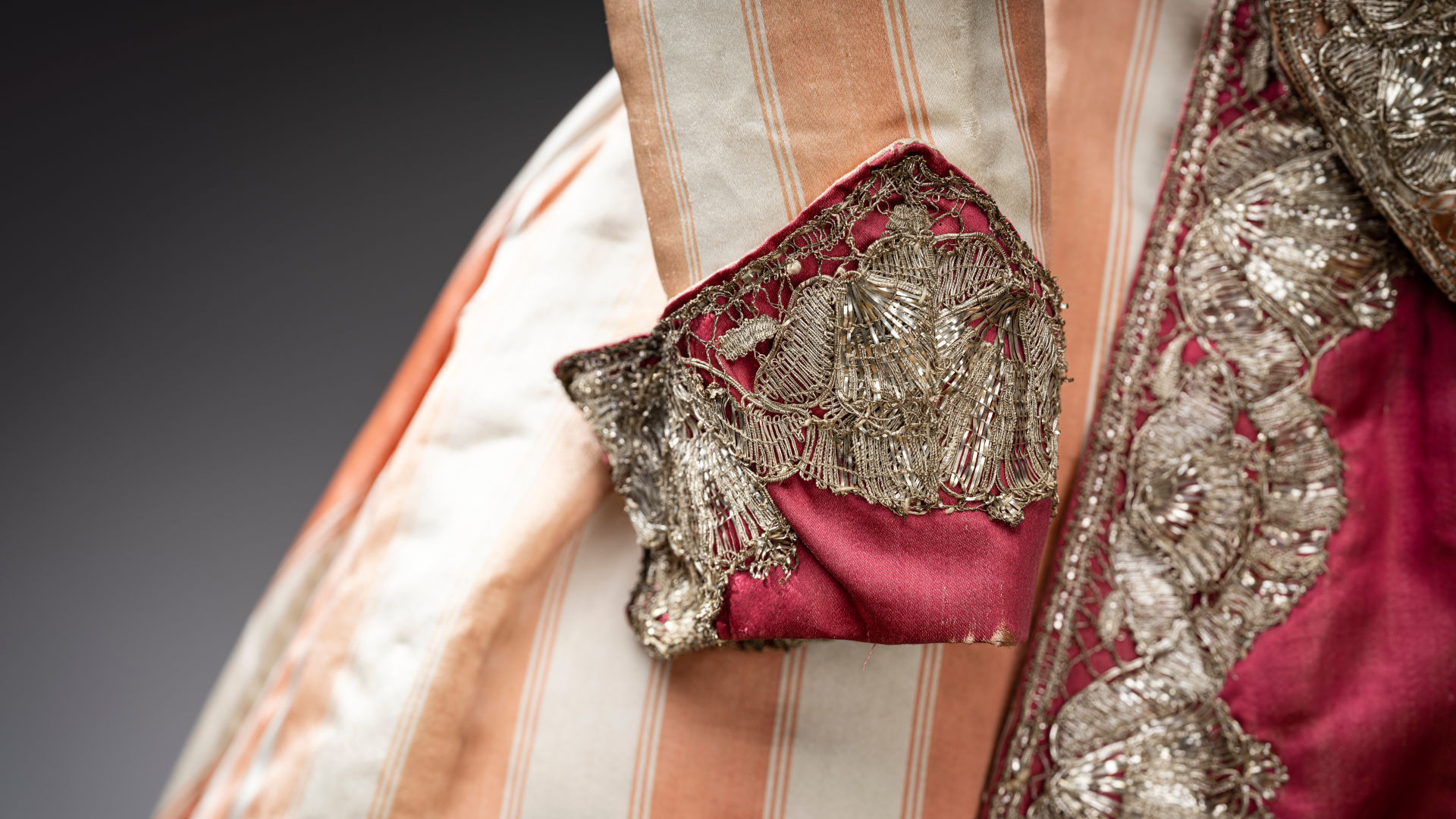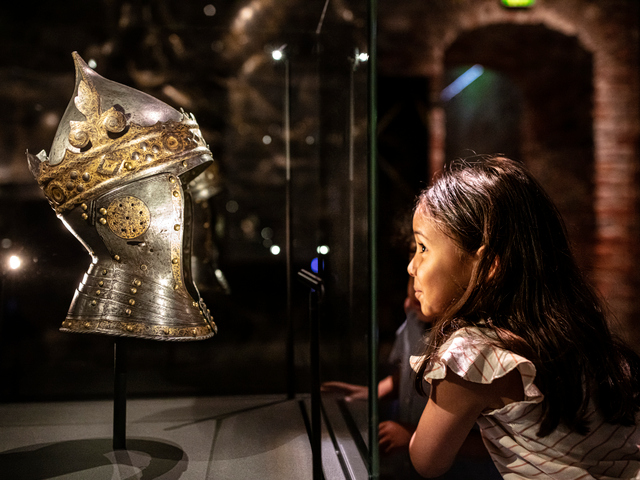
Photo and film production: Daniel Gustafsson, The Royal Armoury/SHM.
The Theatre King
Join us on a costume cavalcade! The exhibition takes you through the magical world of theater of the Gustavian era. An epoch where the passionate so-called "theater king" Gustav III created an outstanding atmosphere around culture. Where the theater became a space for splendor and spectacle, as well as a tool to wield for political and royal power.
The Theatre King is an exhibition in four acts that begins with Gustav III’s resplendent silver coronation costume. It shows the royal cultural life that flourished in the 18th century, with music, dance, artists, grandiose outdoor spectacles, court life and tournaments. The exhibition ends with a costume from Verdi’s opera Un Ballo in Maschera. In this costume, fact and fiction are woven together in a finale worthy of a Theatre King.

The stage as a political weapon
The Gustavian era is known as a golden age characterized by a rich cultural life and a thriving theater scene. As a newly crowned king, Gustav III aimed to establish a national theater that reflected the ideas of the time and the monarch. He founded the Royal Swedish Opera in 1773, and in 1788, the king also initiated the Royal Dramatic Theatre in Stockholm.
Gustav III was a true professional when it came to the theatre. The costumes were his private property. He acted as director, playwright and costume creator, wrote librettos, created décor and acted on stage himself in his younger years. Many of his plays were about the kings that he most admired, such as Gustav Vasa and Gustav II Adolf. He was also a gifted talent scout who contracted outstanding artists and musicians from abroad.
Gustav III also knew how to utilize the stage as a political weapon. The power of the monarchy was glorified on the Opera's stage, and around the palaces, festivities took place in the form of jousting tournaments, masquerades, and role-playing, where the power elite and the royals themselves took on leading roles.

Enchanted woods and tournaments
During the summer months, the theatrical performances were often moved to the palace gardens, turning into total theater that transformed into an enchanted world and could last for weeks on end. These events included jousting tournaments, music, dance, architecture, and pyrotechnics. Gustavian carousels were organized, combining jousting with a dramatized narrative. The roles were drawn from medieval novels, history, and mythological stories.
One of the venues for these outdoor spectacles was Drottningholm Palace Park, where the well-known "The Conquest of Galtar Rock" was staged in 1779. Among other roles, Gustav III himself battled a dragon in a knight's role during this performance.

Extravagant costumes
Stockholm experienced a real theatre boom at the end of the 18th century and the Royal Swedish Opera was among the premier opera stages in Europe. This meant that the Opera was also a major workplace and the artists had to master a number of forms of expression – dancing, singing and acting.
Gustavian opera was as much an experience for the eye as for the ear. The emphasis was on the visual and dance had a very prominent place in the 18th century.
The opera was renowned for its extravagant costumes. Fabrics and textiles were highly precious, and recycling was common – costumes were redesigned to follow fashion trends and were given new life in different productions.

Mingling, masquerade balls and regicide
The Gustavian Opera House could accommodate around 950 people, which was quite substantial in a city with 70,000 inhabitants. The opera was also one of the most prestigious meeting places for culture and representation. The royal court had theater on its weekly schedule. Masquerade balls were held during the winter months, becoming a space for disguised social transcendence and role-playing. The Opera's collections contain many beautiful fashion items from the late 1700s. These were not created for the stage but for the audience in the auditorium. When they went out of fashion, they were sold or donated to the Opera and transformed into theater costumes.
It was also at a masquerade ball in 1792 that Gustav III met his fate. On 16 March 1792 he was attacked at a masquerade ball in the Opera House and passed away thirteen days later at the Royal Palace.

Plan your visit
- Wardrobe: Next to the museum shop, there is a wardrobe and lockers.
- Food & beverages: It is not allowed to bring food and drinks into the museum.
- Stroller: Unfortunately, strollers cannot be brought into the museum’s exhibitions. There are a few places to park strollers near the museum entrance, and it is also possible to lock them outdoors in a designated area outside the museum.
Accessibility
All public spaces are wheelchair accessible, and it's possible to borrow a wheelchair on-site. We continuously strive to improve our accessibility to make it easy to visit us, both in person and digitally.





